Abstract
1. The aim of the study was to investigate the interactions between angiotensin II (AII) and adrenoceptor-mediated pressor responses in the pithed rat. Emphasis was placed on the effects of AII on blood pressure per se and the possibility of differential effects on alpha 1- and alpha 2-adrenoceptor-mediated pressor responses. 2. A low concentration of the angiotensin converting enzyme (ACE) inhibitor, teprotide (1 mg kg-1) lowered the resting diastolic blood pressure (BP) and attenuated only the second phase components of pressor responses to both alpha 1- and alpha 2-adrenoceptor agonists. Infusion of AII (50 ng kg-1 min-1) did not reverse the attenuating effect of teprotide and did not reliably restore the basal diastolic BP. 3. Although teprotide (10 mg kg-1) did not produce a greater fall in diastolic BP than did the low dose (1 mg kg-1), it attenuated the peak and second phase pressor responses to alpha 1- and alpha 2-adrenoceptor agonists but had no effect on pressor responses to AII or 5-hydroxytryptamine (5-HT). Infusion of AII reversed the effects of teprotide (10 mg kg-1) provided that rats were pretreated with flurbiprofen (5 mg kg-1), confirming that the depressor effects of the higher dose of teprotide are AII-dependent but that demonstration of this was complicated by products of cyclo-oxygenase. 4. The AII-receptor antagonist, saralasin (4 micrograms kg-1 min-1) attenuated alpha 1- and alpha 2-adrenoceptor-mediated pressor responses in a manner similar to that of teprotide (10 mg kg-1), suggesting that in this pithed rat model the alpha-adrenoceptor-mediated responses were selectively facilitated by endogenous AII. 5. Infusion of AII (50 ng kg-1 min-1) over a 60 min period did not produce a pressor response in the absence of other drugs but did facilitate pressor responses to alpha-adrenoceptor agonists. This confirms that AII can modulate alpha-adrenoceptor-mediated responses independently of basal blood pressure. 6. Overall the results indicate a facilitatory role for endogenous AII on alpha-adrenoceptor-mediated pressor responses. This is discussed in relation to the failure to demonstrate this convincingly under similar conditions on sympathetic nerve-mediated pressor responses.
Full text
PDF

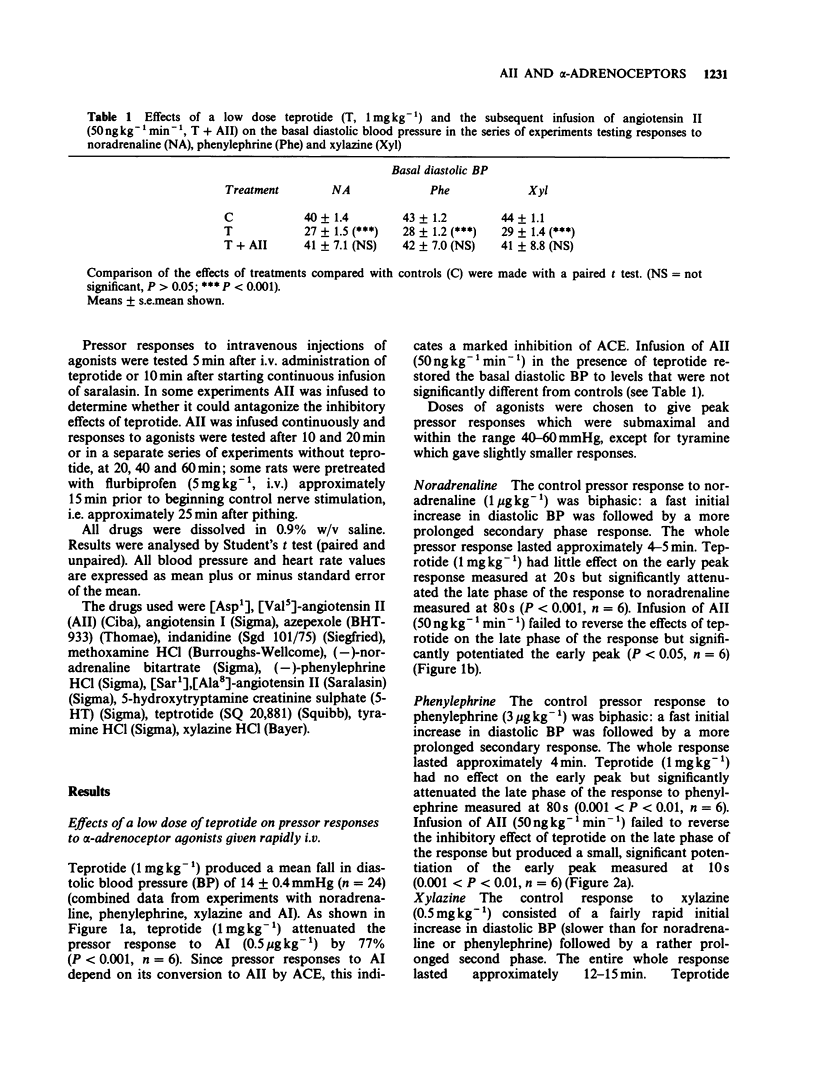
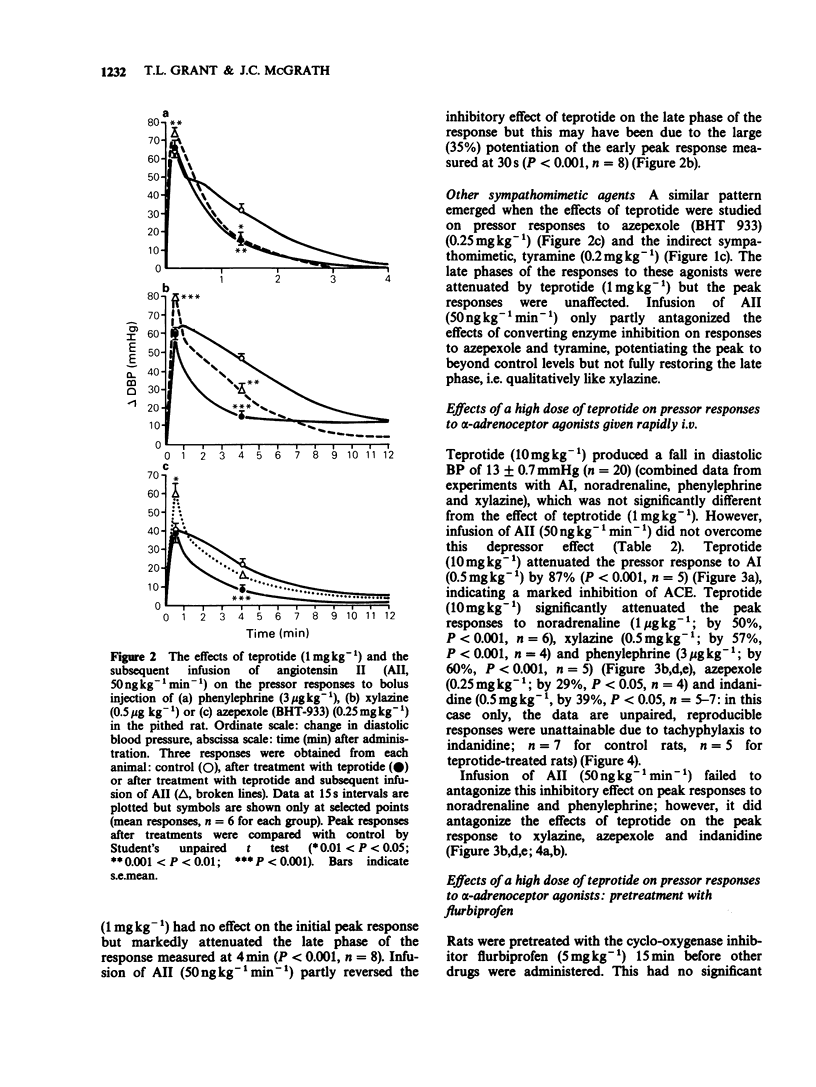
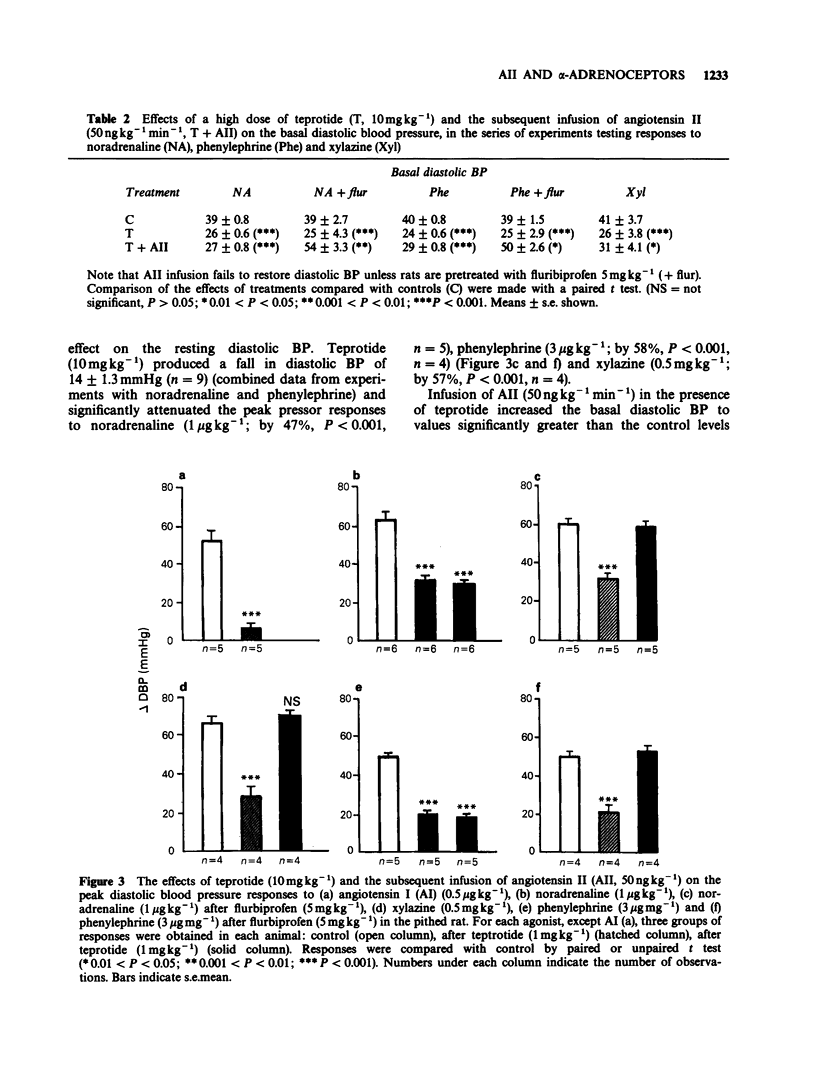
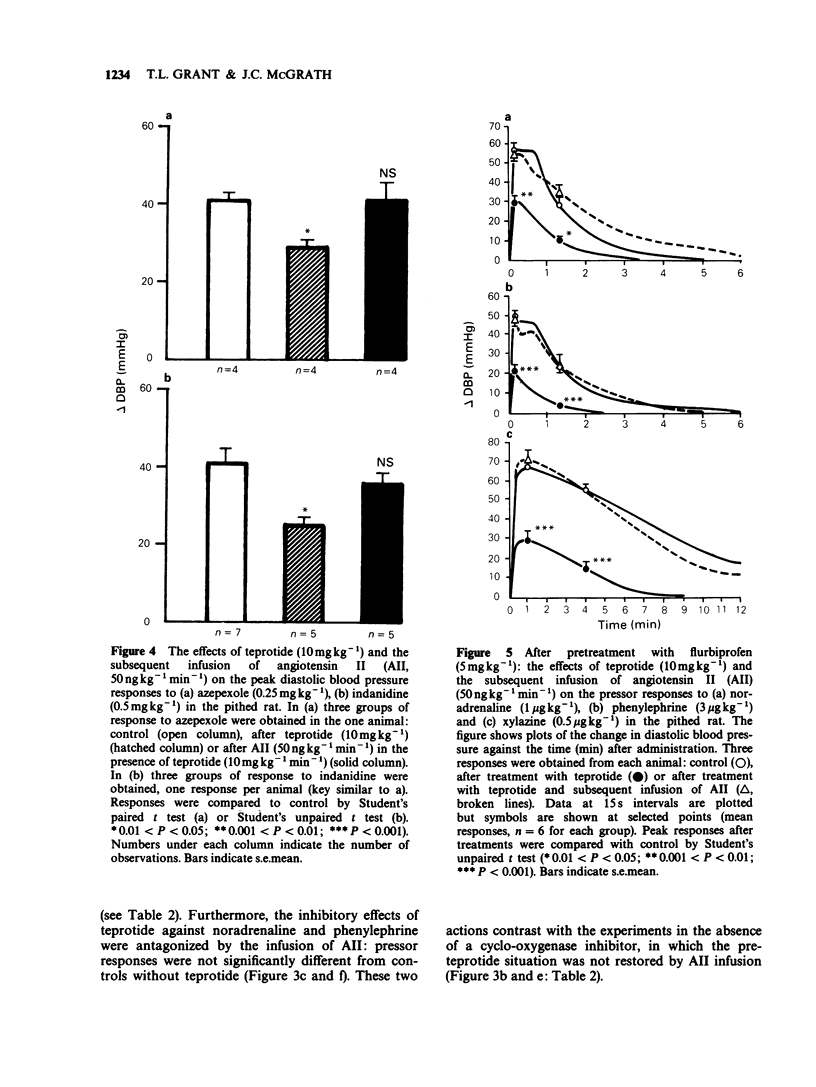

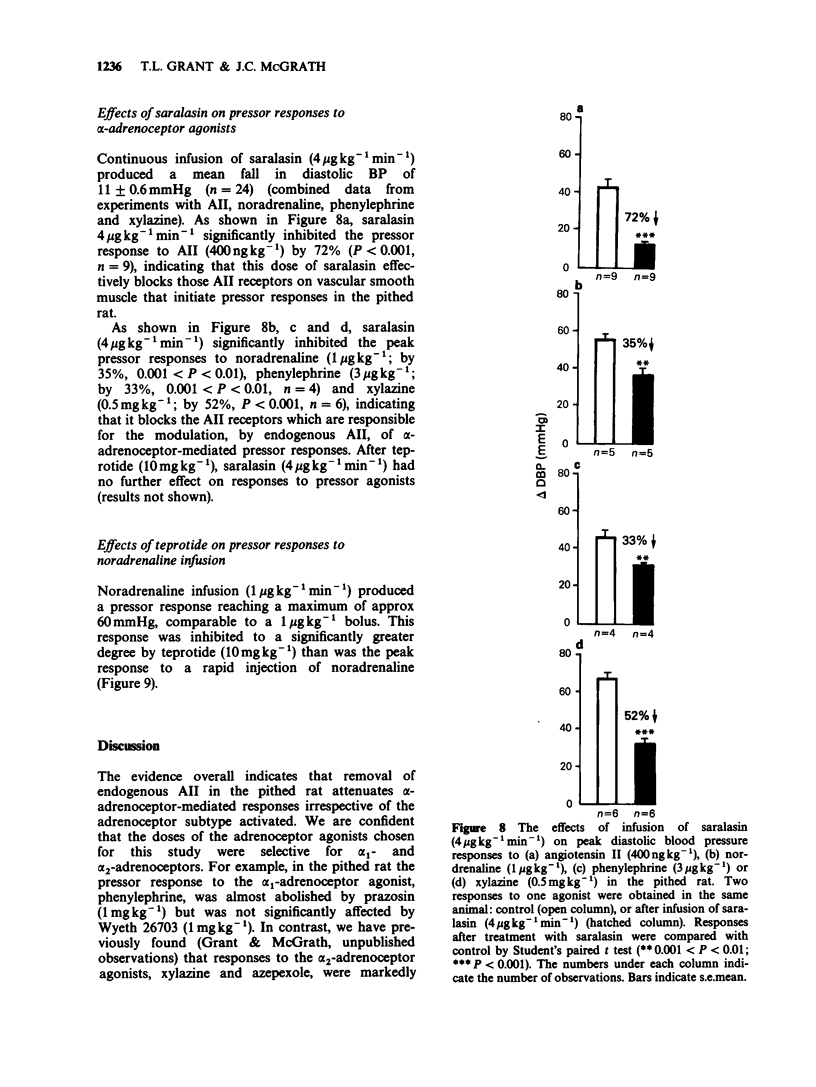
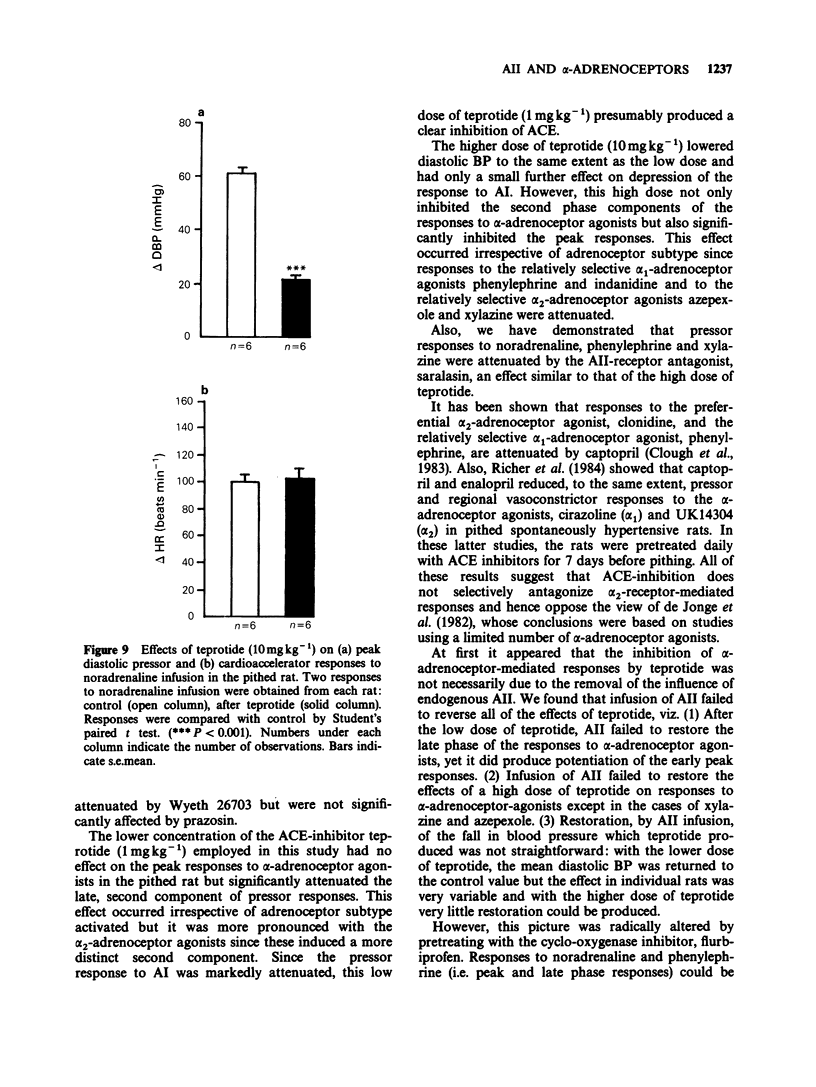
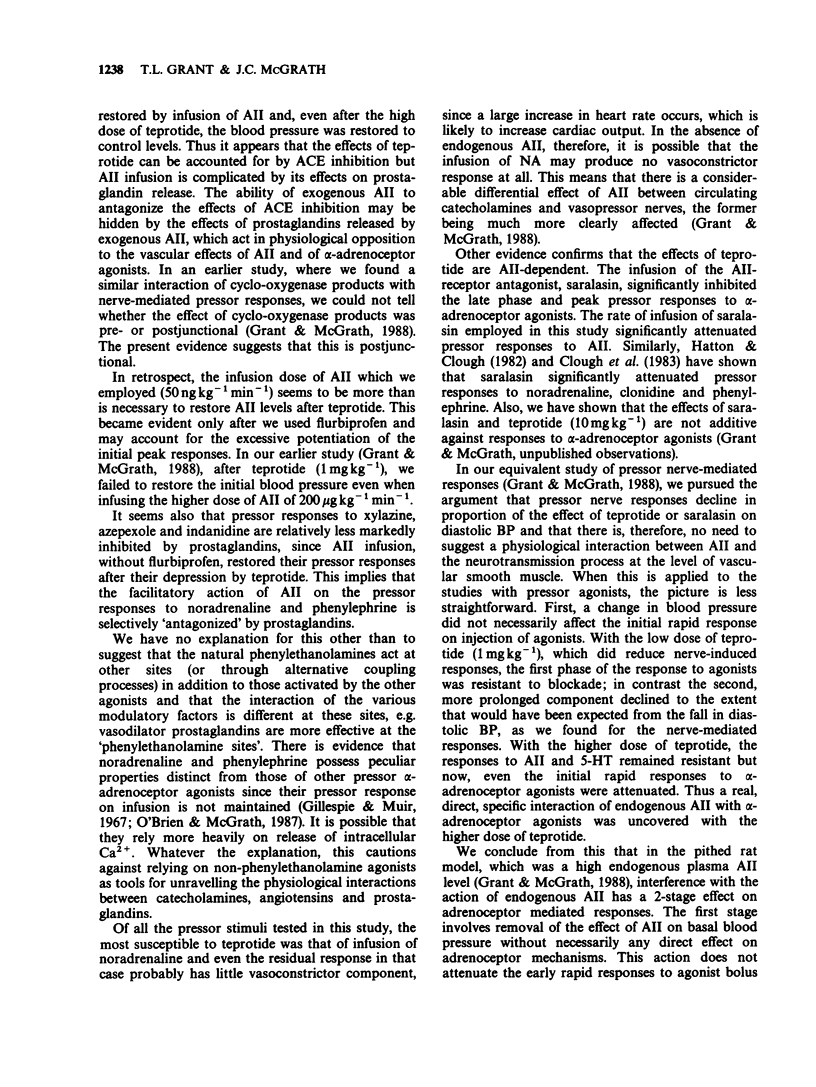
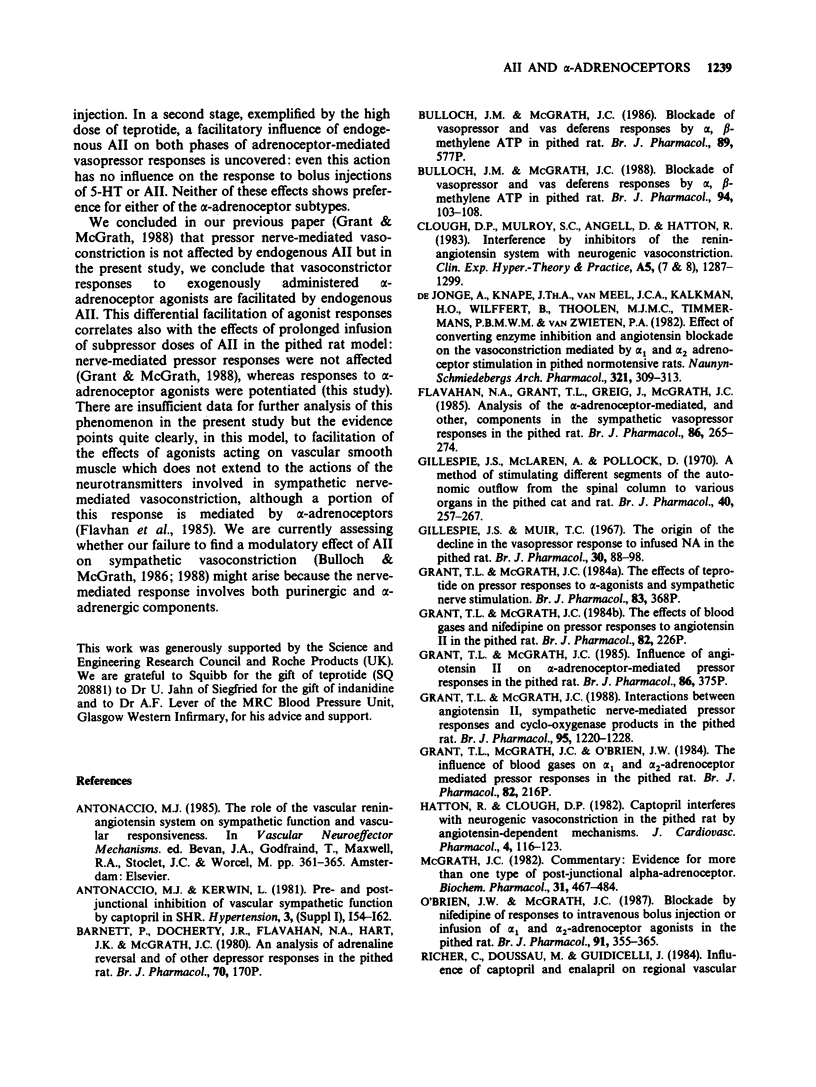
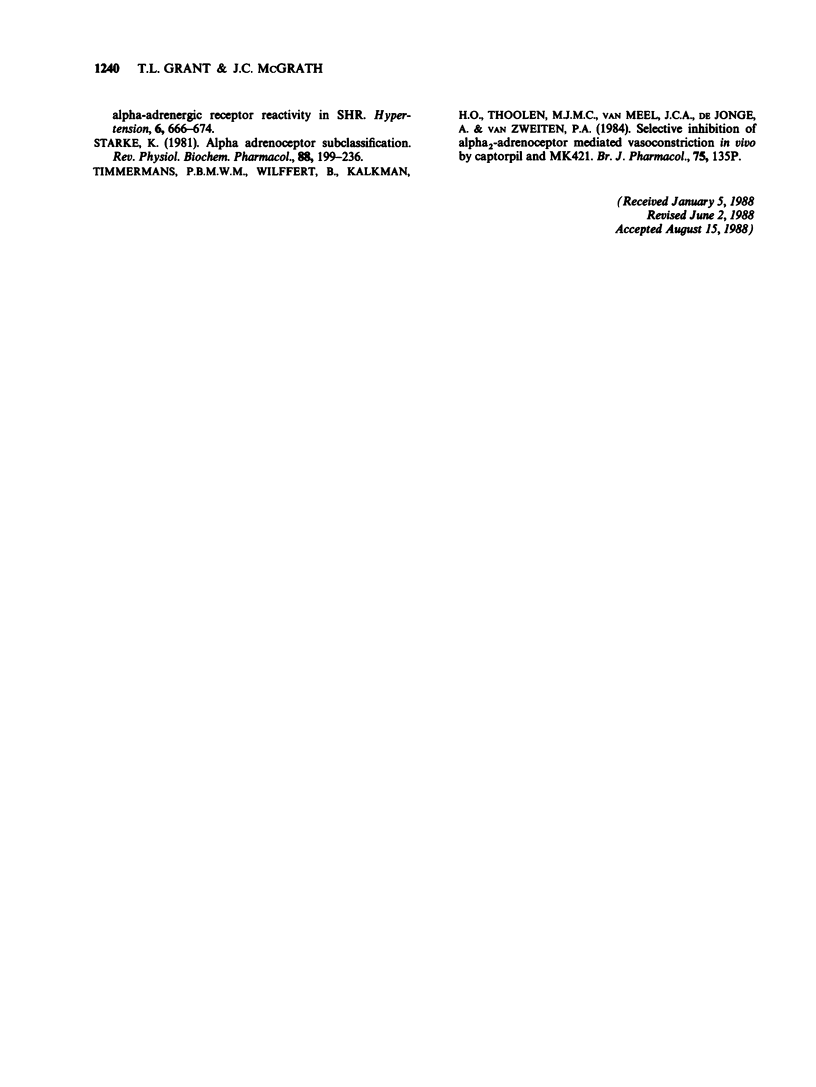
Selected References
These references are in PubMed. This may not be the complete list of references from this article.
- Bulloch J. M., McGrath J. C. Blockade of vasopressor and vas deferens responses by alpha,beta-methylene ATP in the pithed rat. Br J Pharmacol. 1988 May;94(1):103–108. doi: 10.1111/j.1476-5381.1988.tb11504.x. [DOI] [PMC free article] [PubMed] [Google Scholar]
- Clough D. P., Mulroy S. C., Angell D., Hatton R. Interference by inhibitors of the renin-angiotensin system with neurogenic vasoconstriction. Clin Exp Hypertens A. 1983;5(7-8):1287–1299. doi: 10.3109/10641968309048858. [DOI] [PubMed] [Google Scholar]
- Flavahan N. A., Grant T. L., Greig J., McGrath J. C. Analysis of the alpha-adrenoceptor-mediated, and other, components in the sympathetic vasopressor responses of the pithed rat. Br J Pharmacol. 1985 Sep;86(1):265–274. doi: 10.1111/j.1476-5381.1985.tb09458.x. [DOI] [PMC free article] [PubMed] [Google Scholar]
- Gillespie J. S., Maclaren A., Pollock D. A method of stimulating different segments of the autonomic outflow from the spinal column to various organs in the pithed cat and rat. Br J Pharmacol. 1970 Oct;40(2):257–267. doi: 10.1111/j.1476-5381.1970.tb09919.x. [DOI] [PMC free article] [PubMed] [Google Scholar]
- Gillespie J. S., Muir T. C. The origin of the decline in the vasopressor response to infused noradrenaline in the pithed rat. Br J Pharmacol Chemother. 1967 May;30(1):88–98. doi: 10.1111/j.1476-5381.1967.tb02115.x. [DOI] [PMC free article] [PubMed] [Google Scholar]
- Grant T. L., McGrath J. C. Interactions between angiotensin II, sympathetic nerve-mediated pressor response and cyclo-oxygenase products in the pithed rat. Br J Pharmacol. 1988 Dec;95(4):1220–1228. doi: 10.1111/j.1476-5381.1988.tb11759.x. [DOI] [PMC free article] [PubMed] [Google Scholar]
- Hatton R., Clough D. P. Captopril interferes with neurogenic vasoconstriction in the pithed rat by angiotensin-dependent mechanisms. J Cardiovasc Pharmacol. 1982 Jan-Feb;4(1):116–123. doi: 10.1097/00005344-198201000-00019. [DOI] [PubMed] [Google Scholar]
- McGrath J. C. Evidence for more than one type of post-junctional alpha-adrenoceptor. Biochem Pharmacol. 1982 Feb 15;31(4):467–484. doi: 10.1016/0006-2952(82)90147-2. [DOI] [PubMed] [Google Scholar]
- McGrath J. C., O'Brien J. W. Blockade by nifedipine of responses to intravenous bolus injection or infusion of alpha 1- and alpha 2-adrenoceptor agonists in the pithed rat. Br J Pharmacol. 1987 Jun;91(2):355–365. doi: 10.1111/j.1476-5381.1987.tb10290.x. [DOI] [PMC free article] [PubMed] [Google Scholar]
- Shirakawa O., Tanaka C. Molecular characterization of muscarinic receptor subtypes in bovine cerebral cortex by radiation inactivation and molecular exclusion h.p.l.c. Br J Pharmacol. 1985 Oct;86(2):375–383. doi: 10.1111/j.1476-5381.1985.tb08906.x. [DOI] [PMC free article] [PubMed] [Google Scholar]
- Starke K. Alpha-adrenoceptor subclassification. Rev Physiol Biochem Pharmacol. 1981;88:199–236. [PubMed] [Google Scholar]
- de Jonge A., Knape J. T., van Meel J. C., Kalkman H. O., Wilffert B., Thoolen M. J., Timmermanns P. B., van Zwieten P. A. Effect of converting enzyme inhibition and angiotensin receptor blockade on the vasoconstriction mediated by alpha 1-and alpha 2-adrenoceptor stimulation in pithed normotensive rats. Naunyn Schmiedebergs Arch Pharmacol. 1982 Dec;321(4):309–313. doi: 10.1007/BF00498519. [DOI] [PubMed] [Google Scholar]


